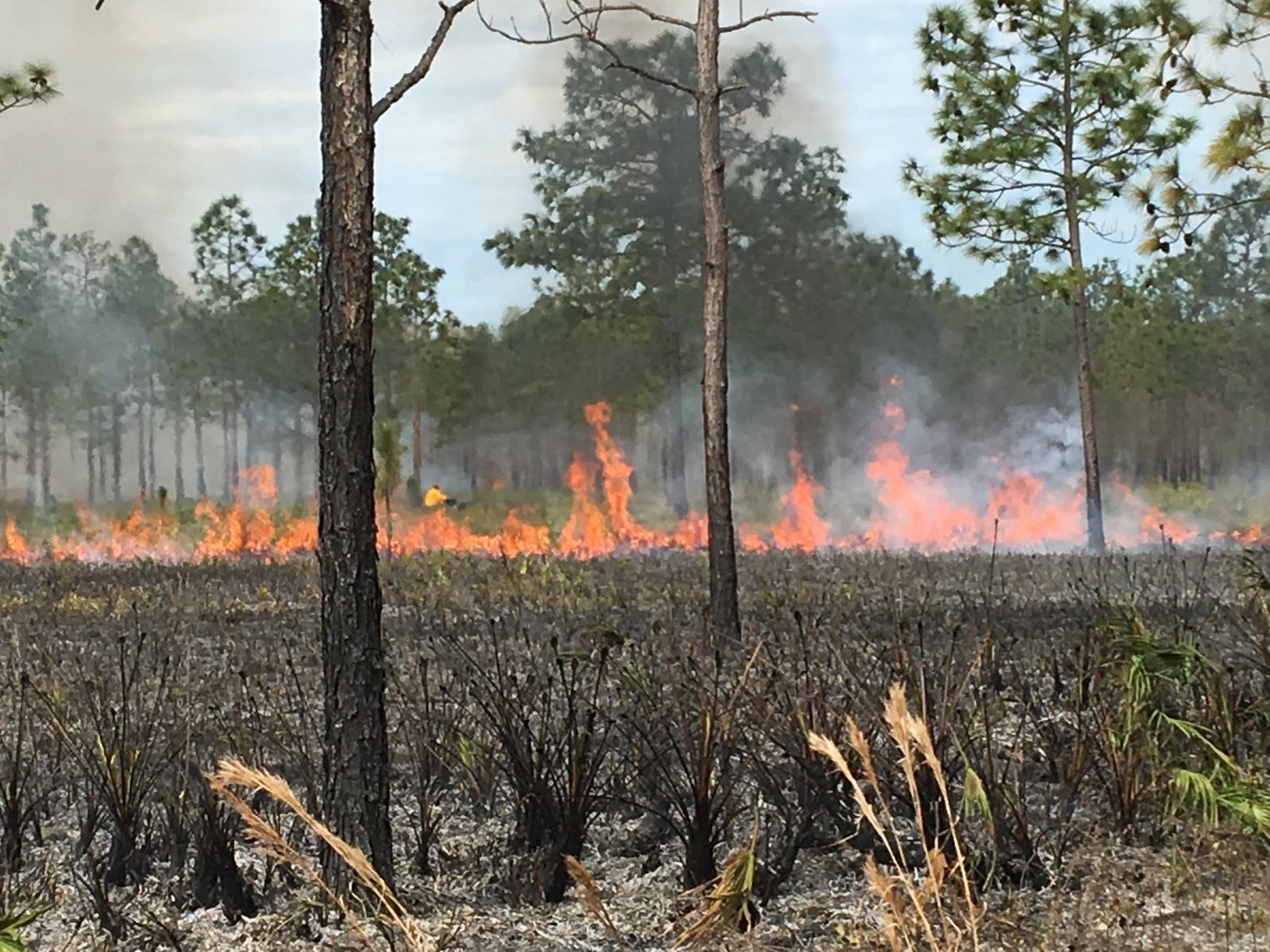 To the average Floridian, fires appear to be devastating forces, demolishing forests and destroying all wildlife in their erratic paths.
To the average Floridian, fires appear to be devastating forces, demolishing forests and destroying all wildlife in their erratic paths.
Chris Reed has a totally different opinion. “Fires are our number one management tool,” he says. “Done regularly, they’re very safe and very effective.”
The manager of the Southwest Florida Water Management District’s land management section, Reed leads a team that sets thousands of acres on fire every year across the district in a carefully controlled process that mimics nature.
Without those intentionally set fires – also known as prescribed burns – Florida could have dangerously out-of-control wildfires like those that swept through northeast Florida in 1998, closing down interstate highways and forcing thousands of residents to evacuate. More recently, hundreds of acres burned in Starkey Preserve and south Hillsborough County in 2017, also shutting down major highways and creating a low-hanging haze that blanketed the region.
“Historically wildlands burn an average of every four years,” Reed says. Prescribed burns, which optimally are performed every two to five years, remove the undergrowth that fuels the fires, minimizing the potential for less controllable wildfires.
Prescribed burns also help restore natural areas because they kill invasive plants while encouraging the growth of natives that have evolved to thrive in conditions that burn often. “Some native plants don’t have viable seeds unless they’ve been burned at a certain time of year,” he adds.
Planned for precise objectives
 Every step of a prescribed burn is part of a carefully controlled process that begins with a goal and includes very specific environmental requirements. Many occur in the fall, when temperatures begin to drop and weather is more predictable. In other locations, prescribed burns are scheduled for spring, the “sweet spot” for native plants like wiregrass and Indian grass to sprout in soil that’s been revitalized with nutrients from a recent fire.
Every step of a prescribed burn is part of a carefully controlled process that begins with a goal and includes very specific environmental requirements. Many occur in the fall, when temperatures begin to drop and weather is more predictable. In other locations, prescribed burns are scheduled for spring, the “sweet spot” for native plants like wiregrass and Indian grass to sprout in soil that’s been revitalized with nutrients from a recent fire.
Across the district, lands targeted for prescribed burns are tracked and coded by their most recent burns with a GIS system that documents at least 15 years of data. Available fuel is carefully calculated, taking into account the difference between fast-burning twigs and grasses and big logs that burn slowly but may smolder for hours.
Actually setting the fire, however, is at the mercy of the weather, particularly in smoke-sensitive locations. The National Weather Service has special models that forecast burn conditions, and minimum parameters for multiple weather conditions are considered. “We look at things like how many days has it been since it rained, the drought and dispersion indexes and then we decide what resources we need, like one bulldozer and two trucks or two bulldozers and 12 people.”
Even then, a small test fire is lit to make sure there are no surprises in the weather or fuel loads. “We’ll burn for 15 or 20 minutes to get a feel of what it’s going to do,” Reed said. “If it’s burning hot, we’ll put it out right then.”
Of the district’s 265,000 acres, approximately 162,000 acres are “fire-dependent” ecosystems that would have naturally burned. The goal is to burn 40,500 acres every year, but meeting that number depends upon weather as well as the staffing and resources available.
Forecast for 2021
Slightly below average rainfall last summer, coupled with the La Nina weather phenomenon that creates warm and dry winter conditions in Florida, could mean potentially dangerous conditions for later this winter and next spring, Reed said. A warmer winter encourages growth of brush and weeds that could possibly become fuel; a drier winter lowers the humidity, making it easier for a fire to catch and spread, particularly during the spring.
“I watch the rain,” he says. “It’s great to see things get wet.”
Click here to see aerial footage from a prescribed fire in the Green Swamp Wilderness Preserve.